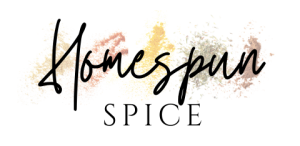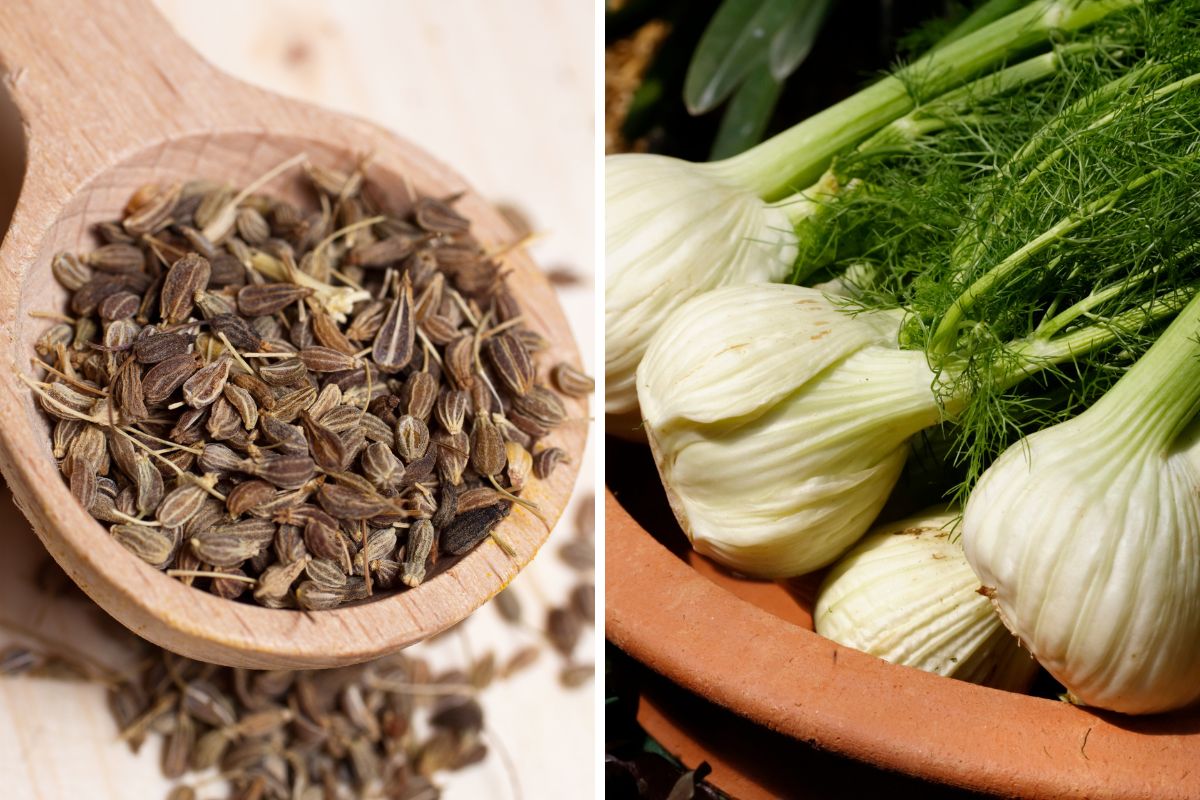Anise and fennel are two spices that are often confused with each other because they both have a licorice-like flavor. Anise is often used in baking recipes, while fennel is common in vegetable dishes and salads. While these two spices are similar, their distinct flavor profiles make them suitable for different dishes and drinks.
Table of Contents
What is Anise?
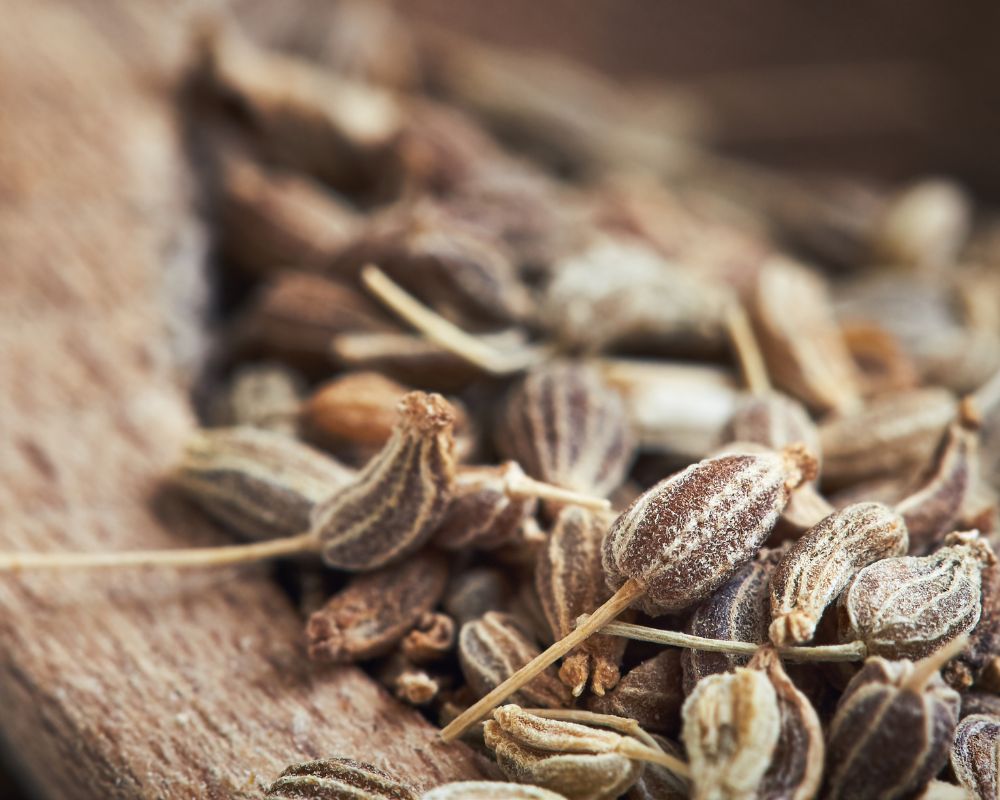
Anise (Pimpinella anisum) is an annual herbaceous plant that belongs to the Apiaceae family. It produces small, fragrant white flowers in an umbrella-like cluster. Anise seeds are used as a spice in many cuisines and are known for their sweet, licorice-like flavor.
Anise seeds should not be confused with star anise, which belongs to a different plant family.
What is fennel?
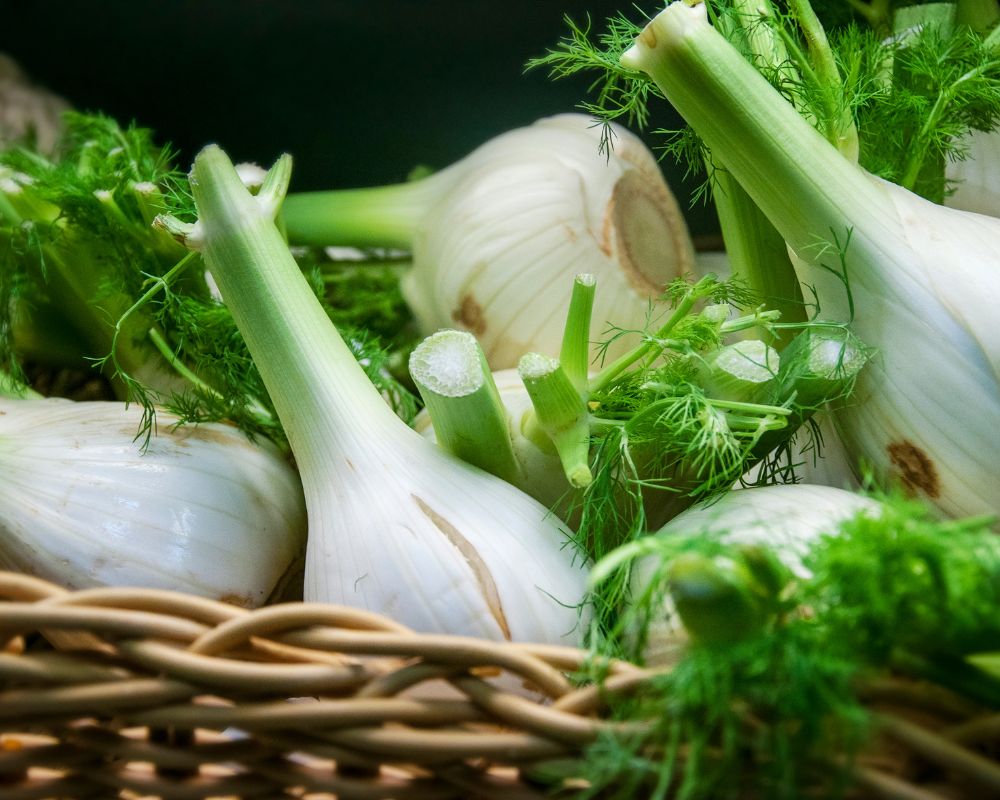
Fennel (Foeniculum vulgare) is a perennial herb that belongs to the same family as anise. It has feathery leaves and yellow flowers. Fennel is widely cultivated for its seeds, which have a sweet, anise-like flavor. They act as a spice in many dishes and have medicinal properties. The bulb, leaves, fronds, and stalks of the fennel plant are also used in cooking.
Florence fennel is the bulbous part of the plant and is typically the kind you see most often in supermarkets.
Are fennel and Anise similar in any way?
While fennel and anise are different plants, they share some similarities in flavor and medicinal properties.
Both fennel and anise have a sweet, licorice-like flavor, although anise has a more robust and sweeter taste than fennel. This similar flavor comes from the anethole found in seeds.
Fennel and anise are both believed to have health benefits. They are used in traditional medicine to treat various ailments, including digestive issues (they are strong diuretics), coughs, and colds.
What is the difference between fennel and Anise?
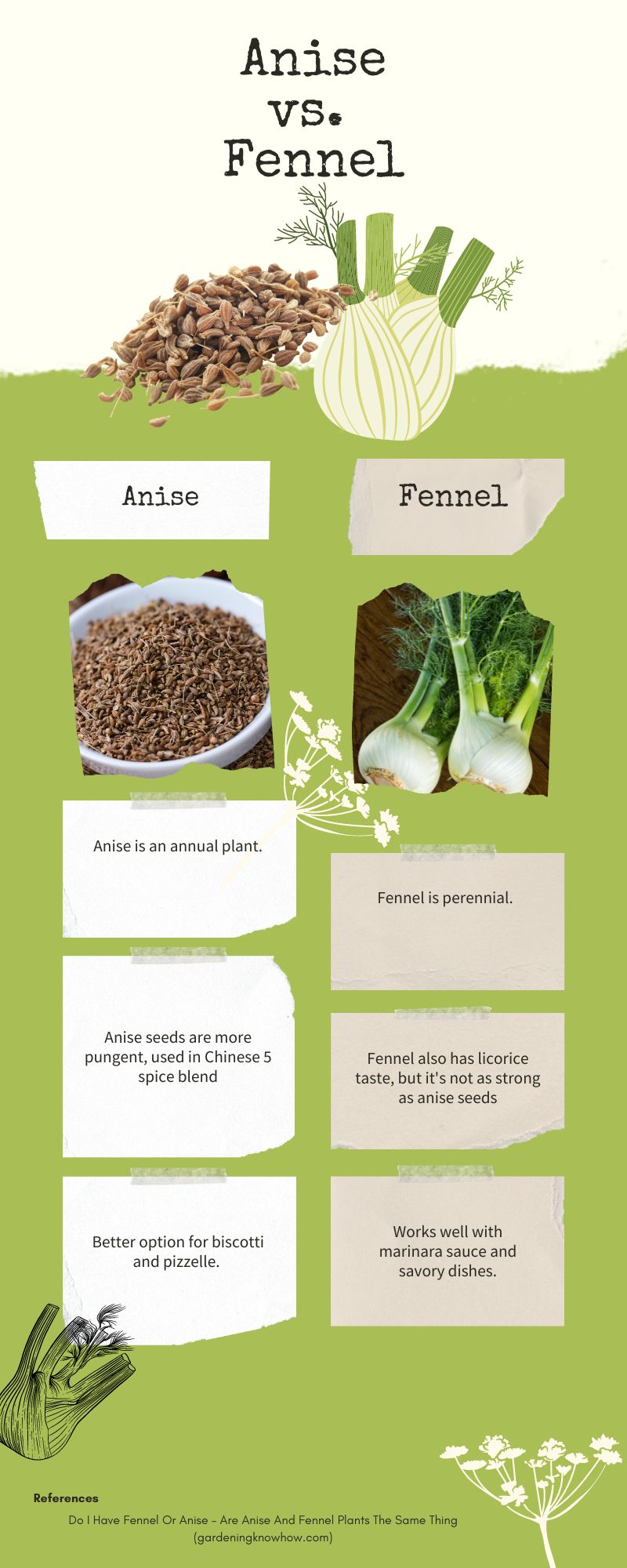
Fennel and anise are distinctly different in appearance, although the leaves of both fennel and anise are very similar. Here are the key differences between these two plants.
Origin
Fennel is native to the Mediterranean region, while anise is native to the eastern Mediterranean region and Southwest Asia. This means fennel is more commonly used in Mediterranean cuisine, while anise is more prevalent in Asian dishes.
Type
Fennel is a perennial herbaceous plant that can survive for multiple years. On the other hand, anise is an annual herbaceous plant, meaning it only lives for one growing season.
Edible parts
The entire fennel plant is edible, including the bulb, foliage, and seeds. In contrast, only anise seeds are good for human consumption. Fennel bulbs are often roasted or grilled and used in salads or as a vegetable side dish. The foliage adds flavor to salads, soups, and stews. Fennel seeds are common in spice blends, baked goods, and beverages.
Appearance
Fennel has a bulb-like base and tall, thin stalks that resemble celery. Anise is a smaller plant with more delicate stems and no bulb.
Flavor
Although they have similar tastes, anise has a more intense and distinct licorice flavor, often used in Chinese five-spice powder and Indian panch phoran. Fennel also has a licorice flavor but is less sweet and strong.
Applications
Fennel is often used as a vegetable in cooking, while anise is a spice. Fennel bulbs can be roasted, grilled, or sautéed, while fennel seeds are ideal for spice blends, baked goods, and beverages. Anise seeds work great for liqueurs, baked goods, and savory dishes.
Shelf life
The longevity of whole anise seeds is approximately 3 to 4 years if you store them in a cool and dark place. Fennel seeds can endure for 2 to 3 years when stored under similar conditions. For the finest quality flavor and extended shelf life, you should store both types of seeds in their whole form.
Use raw fennel bulbs and foliage within a week of purchase.
Comparison Table
| Anise | Fennel | |
| Origin | Native to the eastern Mediterranean region and Southwest Asia | Native to the Mediterranean |
| Type | An annual herbaceous plant | A perennial herbaceous plant |
| Edible parts | Only seeds | The entire fennel plant |
| Appearance | A smaller plant with thinner stems and no bulb | A bulb-like base and tall, thin stalks |
| Flavor | The more intensely flavored one, with a distinct licorice taste | Also has a licorice flavor, but it’s less sweet and not as strong |
| Applications | Mainly used as a spice | Often used as a vegetable in cooking |
| Shelf life | 2 to 3 years | 3 to 4 years, raw fennel 1 week |
How to use fennel?
Here’s how you can use fennel in your favorite recipes:
- The bulb can be sliced and added raw to salads, roasted, grilled, steamed, or even added to creamy stews.
- The leaves can be chopped and used as a garnish or added to soups and stews for flavor.
- The seeds can be used whole or ground in savory or sweet dishes, such as curries, Italian sausages, bread, and flavored tea.
- A less-known fact is that fennel adds flavor to natural toothpaste.
- You can use all parts of the fennel plant in various forms.
How to use Anise?
Here’s how to use anise:
- The seeds can be used whole or ground in sweet and savory dishes, such as cookies, bread, curries, and marinades.
- The leaves can be chopped and used as a garnish or added to salads, soups, and stews for flavor. You can eat them either raw or cooked.
- You can use anise in other ways, like essential oil extract production.
- Only the seeds of the anise plant are used in cooking.
Which is better?
There’s no better option! It all depends on the recipe you’re using. Here are some of the most important uses for each:
| Fennel | For stews, Italian sausage, marinara sauce, candies, pastries, sweet pickles, fish, and seafood in general |
| Anise | For liqueurs, biscotti, puddings, dairy products, gelatins, sauces, meats, and candies |
Can you substitute Anise for fennel?
Anise and fennel belong to the same family, Apiaceae, and have a similar licorice-like flavor profile. While they are not identical, you can use them interchangeably in some recipes. However, their differences can affect the final taste of the dish.
When substituting anise for fennel, it is best to use a smaller amount of anise as it has a more robust flavor. A good rule of thumb is to use about half the amount of anise as fennel called for in the recipe.
Here are some recipes where anise and fennel substitute one another:
Roasted vegetables: Both anise and fennel can add a sweet, slightly licorice flavor to roasted vegetables such as carrots, parsnips, and sweet potatoes.
Soups and stews: anise and fennel can be used in soups and stews to add a complex, savory flavor. They pair well with hearty vegetables and meats.
Baked goods: anise and fennel can be used in baked goods such as bread, cookies, and cakes to add a subtle licorice flavor.
Several other substitute ideas


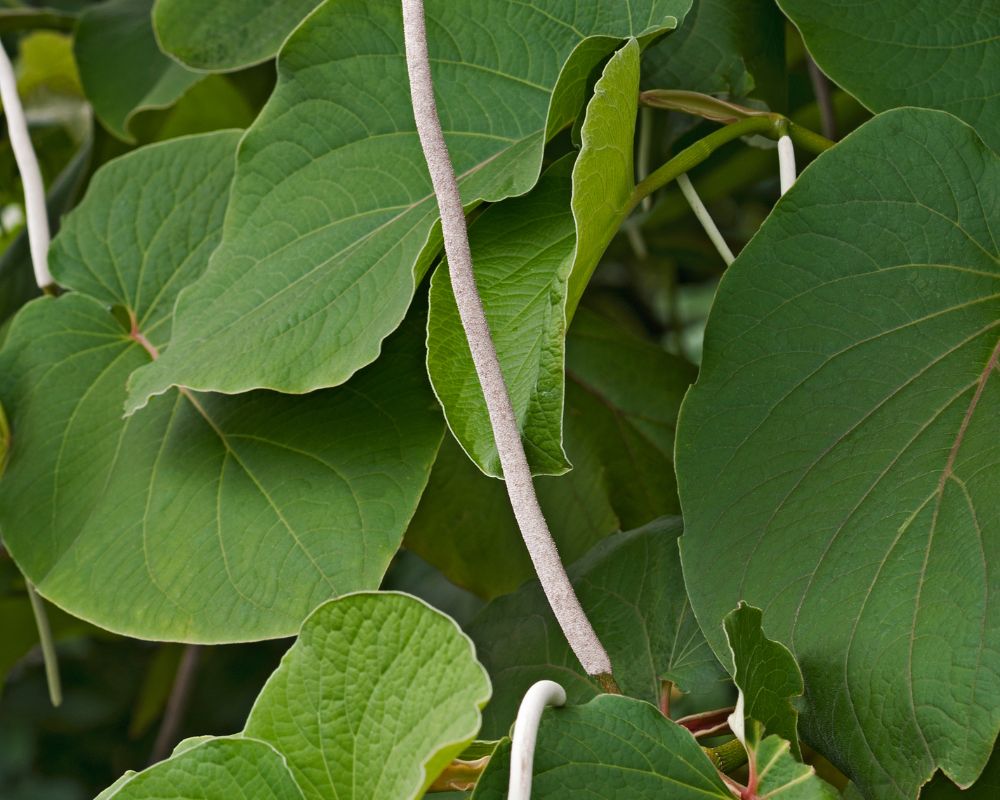
| Caraway seeds | Have a more earthy and nutty flavor and pair well with savory dishes such as soups, stews, and roasted meats |
| Tarragon | Has a similar licorice-like flavor but is more delicate and herbaceous, often used in French cuisine and pairs well with chicken, fish, and vegetable |
| Hoja Santa leaves | A slightly bitter, peppery taste and can be used to flavor sauces, stews, and soups |
Caraway seeds can also substitute for anise or fennel, although they have a slightly different flavor profile. Caraway seeds have a more earthy and nutty flavor and pair well with savory dishes such as soups, stews, and roasted meats.
Tarragon is another herb that substitutes anise. It has a similar licorice-like flavor but is more delicate and herbaceous. Tarragon is often used in French cuisine and pairs well with chicken, fish, and vegetables.
Hoja Santa leaves, also known as “holy leaves,” are commonly used in Mexican cuisine and have a flavor similar to anise or fennel. They have a slightly bitter, peppery taste and can be used to flavor sauces, stews, and soups. However, they can be difficult to find in some areas.
Where to purchase fennel and Anise?
You can usually purchase fennel and anise at most grocery stores and supermarkets, either fresh or dried. You can also find them in specialty stores that sell herbs and spices.
If you prefer to shop online, many online retailers sell fennel and anise, including Amazon, iHerb, and Mountain Rose Herbs. Some local farmers’ markets may also have fresh fennel and anise during the season.
